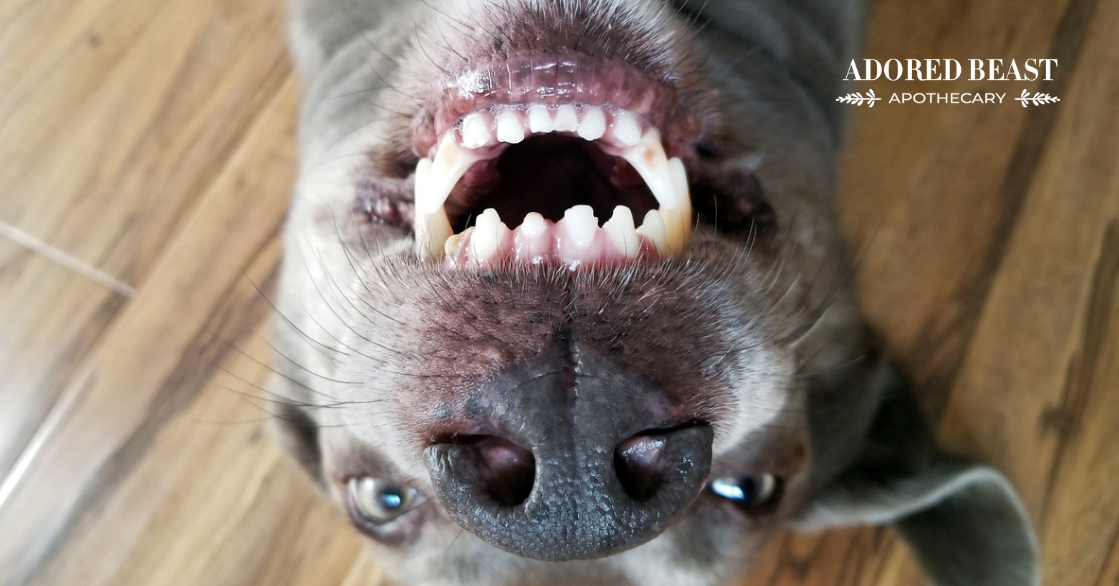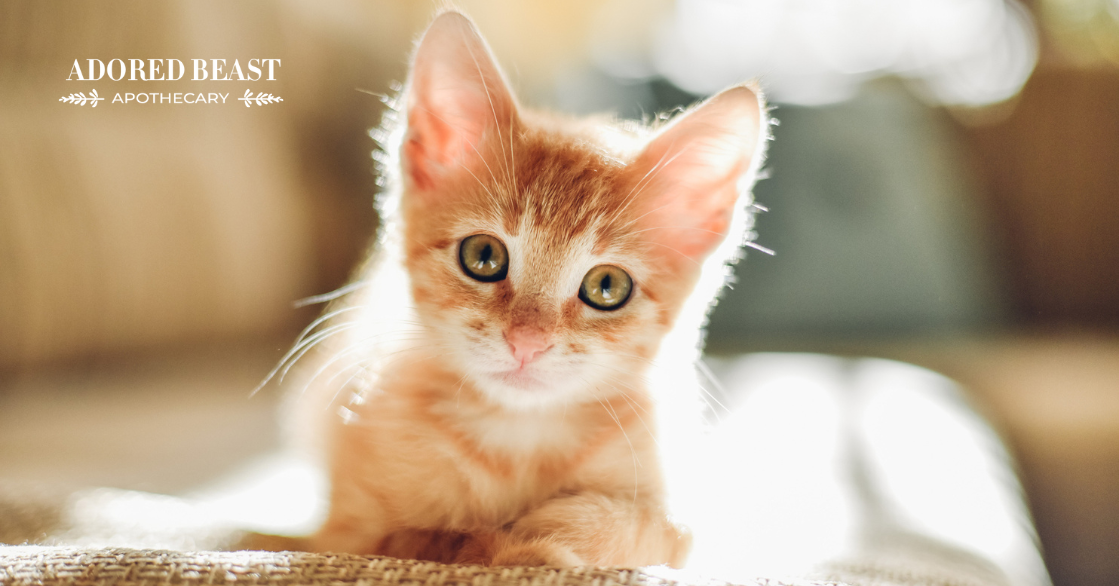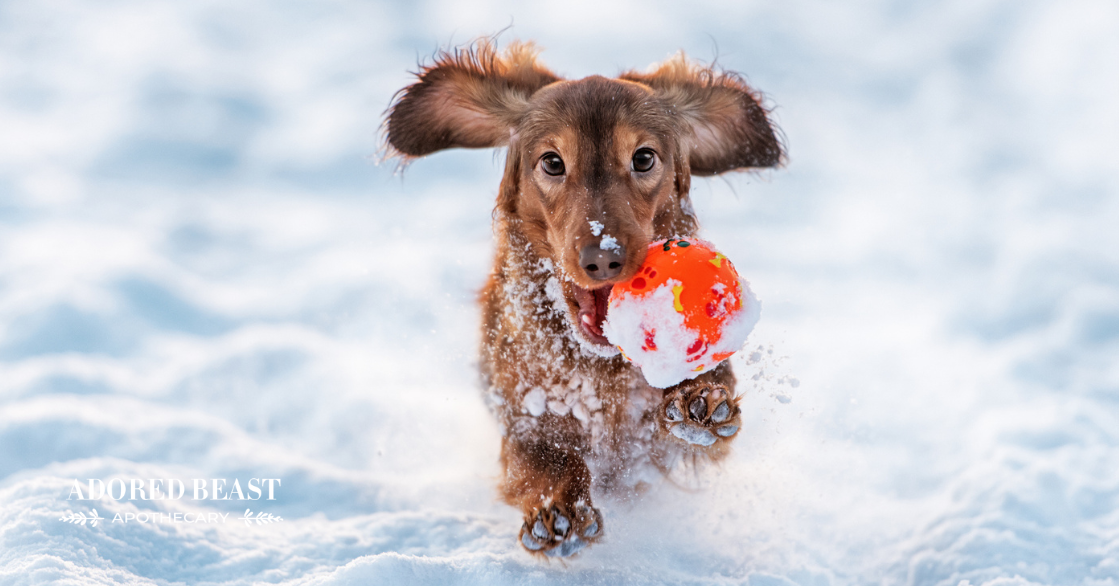As children, we all learned that brushing our teeth was an important daily ritual. And although, for some of us, it was a chore we tried to avoid, as adults we’ve come to recognize how essential it is.
The funny thing is, many pet parents overlook this when it comes to their own animal’s health. We forget that our dogs’ teeth require brushing just as much as our own teeth! And that could be because we just plain forget about it, or because we’ve never done it before and are overwhelmed by the prospect.
No matter the reason, brushing your dog’s teeth is essential…
Today, we want to talk about why, and walk through some simple steps to help you get started! Ready to find out how to brush a dog’s teeth? Let’s do this!
The Importance of Cleaning Those Teeth
We all know that brushing our teeth is crucial for not just dental health, but overall health.
And the same goes for our dogs!
There are many reasons to keep an eye on your animal’s dental health:
- Dental Health. When plaque and tarter build up, so does bacteria, and that can cause bad breath. Too much plaque and tartar build-up can push the gums away from the teeth, exposing new areas for bacteria to develop. This leads to gum inflammation, and can also cause cavities, infection, tissue destruction, and tooth loss.
- Heart Health. There’s a huge connection between dental health and heart health. Infections that start in the teeth and gums can travel through the blood and negatively affect organs like the heart. Bacteria found within the mouth of pets with dental disease are some of the same bacteria that are often associated with both endocarditis (inflammation/infection of the interior of the heart) and valvular disease in dogs and cats. Additionally, periodontal disease has been linked to an increased risk of heart disease in dogs.
- Liver and Kidney Health. The liver and kidneys are also susceptible to the effects of dental disease. The primary function of the liver and kidneys is to filter the blood, and if bacteria from the oral cavity spread to each of these organs, it has the potential to cause major problems. Infection and inflammation within the liver and kidneys can cause other issues, while also interfering with the function of these organs.
Did You Know: There is a myth that kibble will keep your pet’s teeth clean. And while kibble may scrape some of the tartar off, it isn’t effective at cleaning teeth. It’d be the same as us eating crackers or hard cookies and thinking that’s enough to keep cavities at bay. When we eat those things, (or your dog eats dry dog food), they stick in our teeth, then we drink water and it turns into a pasty, sticky mess, causing bacteria to form! In fact, kibble includes a higher percentage of carbohydrates, which feed the bacteria in the mouth that lead to dental disease.
How to Brush a Dog’s Teeth
Brush-a, brush-a, brush-a… anyone picturing Jan from Grease right now?
The way she moves her finger up and down in front of her face is similar to how I brush my dogs’ teeth!
And if you can’t picture it (maybe I’m the only Grease fanatic here), that’s ok – we’re gonna walk through the steps of how to brush a dog’s teeth right now!
Before you begin, make sure you have 2 things:
- Toothpaste. Never use human toothpaste! It can contain ingredients, such as xylitol, which can be toxic to our pets! Make sure to read ingredients carefully, avoiding things like artificial preservatives, silica, or baking soda. Stay away from artificial flavours too. Keep the ingredients as simple and clean as possible – remember, your dog will swallow whatever’s in the toothpaste, not spit it out.
You can also make your own – that’s what we do – we’ve put our favourite recipe down below! - A toothbrush. Now, you can’t just use a human toothbrush here either. Either buy one that’s made for dogs, or simply use a piece of cheese cloth or first aid gauze wrapped around your finger. You can also use an ultrasonic toothbrush for pets. These are great because they’re gentle, silent, they don’t vibrate, and they don’t require scrubbing, which can be uncomfortable for dogs who are sensitive to movement in the mouth.
Ok, you’re ready.
Step #1: Choose a calm, relaxed spot – especially if this is your first time. Put on some calming music, take a few deep breaths. Some dogs get anxious about this, so you want to make sure they’re comfortable.
- If you’ve never brushed your dog’s teeth before, or your pet gets nervous, proceed to step 2.
- If you’re not concerned about your pet being nervous, or know that the process will go off without a hitch, proceed to step 3.
Step #2: Start this well in advance of the actual toothbrushing. Take your time. Do these in stages.
- Show them the toothbrush. Let them sniff it, lick it, check it out. You want them to get comfortable with the toothbrush before you do anything. You can even just leave it around the house in familiar spaces (on their bed, near their food bowl), so they see it and get used to it.
- At the same time, touch the teeth and gums without the brush. Gently lift the top lip up and hold it while you touch the teeth; then pull the bottom lip down and touch the bottom teeth.
- Once they’re comfortable with that, introduce the toothbrush or gauze.
- Then, let them taste the toothpaste.
Step #3: Apply a small amount (follow the directions on the package) of the toothpaste to your chosen toothbrush, and gently massage in and around your animal’s teeth. Gently rub the teeth and all along the gum line. Use lots of praise and encouragement throughout the entire process.
Some dogs will tolerate this even if they don’t really like it. If you can, brush the teeth regularly and this will take some of the stress out of it. Just do your best. Again, go slowly and gently and be patient. For fearful or sensitive personalities or elderly animals, try doing just a 1/4 of the mouth (or even less) at a time to make it a fun experience.
DIY Probiotic Toothpaste
This simple toothpaste uses probiotics to help strengthen that microbiome in the mouth and coconut oil because of its natural antibacterial and anti-inflammatory properties:
- Small Dog (or Cat) – mix together 1 tsp of coconut oil and 1/16 tsp of Love Bugs
- Large Dog – you may need more, up to a tablespoon
Remove from the jar the entire amount you need so that you do not put your finger back in and contaminate the paste. Store it in a glass jar which is good for easy storage of any leftovers.
Now that you know how to brush a dog’s teeth, make it a regular part of your healthcare routine. Most dogs will eventually get used to the process – some even enjoy it! And you’ll know that you’ve added another level of proactive healthcare to your dog’s routine!












